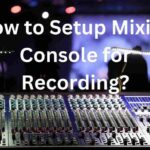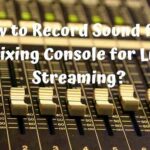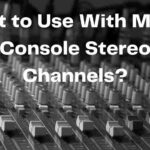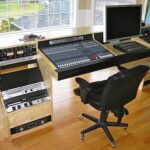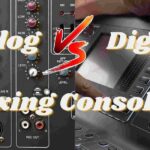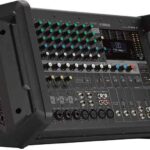A mixing console is a device used to combine, route, and change the level, timbre and/or dynamics of audio signals.
A mixing console is a device used to control the levels of multiple audio signals. These devices are typically used in recording studios, live sound reinforcement systems, and broadcast facilities. A mixing console typically has a number of input channels, each of which can be routed to one or more outputs.
The operator uses the console to adjust the level, frequency response, and other parameters of each signal.
If you have any queries about the best mixing console for recording studio. Then you can check out this article.
How Audio Mixers Work – What is a Mixer & What Does it Do? | Live Sound Lesson
What is the Difference between a Mixer And a Mixing Console?
In audio engineering, a mixing console, or simply mixer, is an electronic device for combining, routing, and changing the level, timbre and/or dynamics of audio signals. A mixing console can come in either analog or digital form. Analog mixers are the original type of mixer created.
They use physical faders and potentiometers to control signal levels. Each input has its own channel strip which contains all necessary controls for that input. There is also a master section that controls the overall mix being sent to the main outputs.
Digital mixers operate using software instead of physical controls. The signal level of each input is controlled by digital algorithms instead of physical faders and pots. This allows for recallability- meaning you can store settings and return to them at a later time.
It also allows for more flexibility in terms of routing options as well as processing options on each channel strip.
What are the 3 Types of Mixing Consoles?
When it comes to mixing consoles, there are three main types that you need to be aware of. These are digital, analog, and hybrid consoles. Each one has its own unique set of features and benefits that can make your mixing experience better.
Here is a closer look at each type of console so you can decide which one is right for you. Digital Consoles Digital consoles are the newest type on the market and they offer a lot of great features that other types don’t have.
One of the biggest advantages of digital consoles is that they give you more control over your mix. With an analog console, you are limited to the number of physical faders and knobs that you have access to. With a digital console, all of the controls are displayed on a screen in front of you.
This means that you can adjust any setting with just a few clicks or taps. Another big advantage of digital consoles is that they usually come with built-in effects processors. This means that you won’t need to buy separate effects units to get started with your mixing.
You can simply add the effects that you want directly into your digital console and have them ready to go whenever you need them. This can save you a lot of money in the long run since you won’t need to buy as many separate pieces of equipment. The downside of digital consoles is that they can be more expensive than other types.
They also require more setup time since everything needs to be connected properly before you start using them. But if you’re looking for professional-grade results, then a digital console is definitely worth considering Analog Consoles.
Analog mixing consoles are the traditional type that most people think about when they think about mixers. They typically have physical faders and knobs for each channel , which gives them a more hands-on feel.
Many engineers prefer this type of mixer because it allows them to fine-tune their mixes quickly without having to rely on screens or menus . One downside of analog consoles is that they can be limited by size.
If you have a lot of channels, then you may not be able to fit all of them into your mixer . This means that the quality of your mix could suffer if you cannot accommodate all of the tracks in your project .
Why Use a Mixing Console?
When it comes to audio mixing, one of the most important pieces of equipment is the mixing console. Also known as a mixer, this device allows you to control the levels of multiple audio signals and combine them into a single output. In other words, it gives you complete control over the sound of your mix.
There are many reasons why you would want to use a mixing console. For one, it allows you to fine-tune the level of each individual element in your mix. This is crucial for getting a well-balanced final product.
Additionally, a mixer gives you the ability to add effects to specific parts of your signal chain. This can include things like reverb or delay, which can really help bring out certain elements in your mix. Finally, using a mixing console can simply make your life easier.
It provides a central point of control for all of your audio signals, which can save you time and hassle in the long run. Plus, with all of the different features and options available on modern mixers, there’s sure to be one that perfectly suits your needs.
What are the 3 Main Functions of a Mixer Console?
A mixer console is a device used to combine, route, and adjust the level, timbre and/or dynamics of audio signals. Mixer consoles are used in many different applications, including recording studios, public address systems, sound reinforcement systems, broadcast television and film post-production. There are three main types of mixer consoles: analog, digital and computer-based.
Each type has its own advantages and disadvantages. Analog mixer consoles are the most common type found in small to medium-sized venues. They are typically less expensive than digital or computer-based mixers and are easier to operate.
However, analog mixer consoles can generate more noise than their digital counterparts and may not offer as many features or options. Digital mixer consoles offer more flexibility than analog mixers and can be controlled via a computer interface. They typically provide better sound quality but can be more expensive than analog mixers.
Computer-based mixers combines the features of both analog and digital mixers into one unit that can be controlled by a computer. These units often offer the best sound quality but can be the most expensive option.
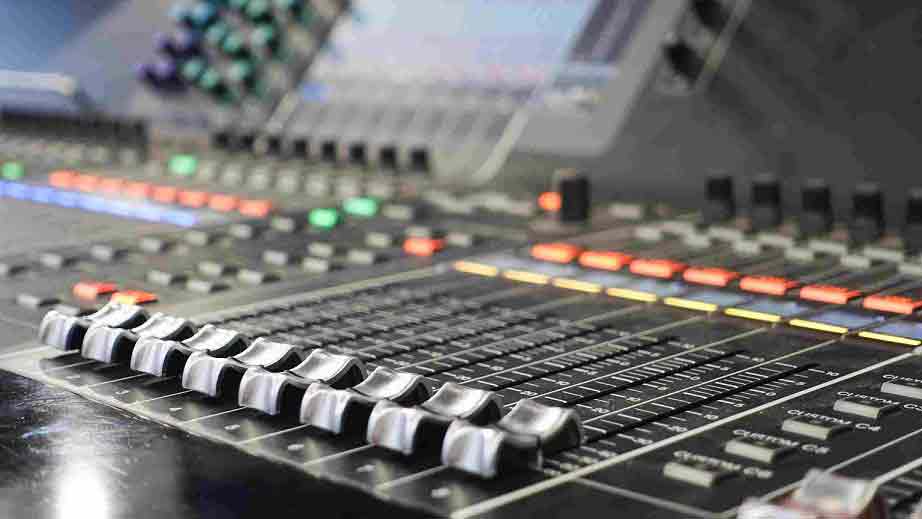
What is a Mixer in Music
In music, a mixer is a device that combines multiple musical signals together. Mixers are used to create new sounds by blending different audio sources, or to simply make multiple sound sources audible at once. The most common type of mixer is the mixing console, which is typically used in recording studios and live sound reinforcement systems.
However, mixers can also be found in other types of audio setups, such as PA systems and portable stereos. Mixers typically have several channels, each of which can accommodate a different audio signal. The simplest mixers only have two channels, but more complex units may have dozens or even hundreds of channels.
Each channel has its own volume control, so that the engineer can adjust the level of each individual signal. In addition to the volume controls, most mixers also offer EQ (equalization) and effects controls for each channel. This allows the engineer to shape the sound of each signal before it is combined with the others.
Once all of the signals are properly mixed, they are routed to a master output section where they are combined into a single signal. This final signal can then be sent to an amplifier or directly to a set of speakers.
Conclusion
A mixing console is a device used to mix together sounds from multiple audio sources. It allows the user to control the levels of each individual sound source and adjust the overall balance of the mix. A mixing console typically has a number of input channels, each of which can be routed to one or more output channels.
The number of input and output channels varies depending on the model, but most consoles have at least four inputs and four outputs.
Relevant Topic:
How to Connect Amplifier to Mixing Console?
What to Use With Mixing Console Stereo Channels?
How to Record Sound from Mixing Console for Live Streaming?
How to Connect Mixing Console to Computer?
What You Need to Know About Live Mixing Consoles?
How to Build a Mixing Console Desk?

Williams Kane is a blogger and writer. He’s passionate about writing and connecting with the community, especially when it comes to sharing his ideas through writing.
I am a versatile author with a passion for exploring a wide range of topics on our multi-niche website. With a background in research and a love for writing, I bring a unique blend of expertise to our platform.
My journey began in the world of science, where I earned a degree in biology and developed a deep fascination for the natural world. This background enables me to delve into topics related to ecology, environmental conservation, and the wonders of the animal kingdom.
However, my curiosity knows no bounds, and I have ventured into various other niches as well. From technology trends and digital innovations to health and wellness tips, I strive to provide well-researched and engaging content that informs and entertains our diverse audience.
Furthermore, my dedication to staying current with the latest developments in each niche ensures that our readers receive up-to-date and reliable information. Whether it’s deciphering complex scientific concepts or simplifying tech jargon, I take pride in making complex subjects accessible to all.
Join me on our multi-niche journey, where we explore the depths of knowledge and share insights on a multitude of topics to inspire, educate, and entertain.


